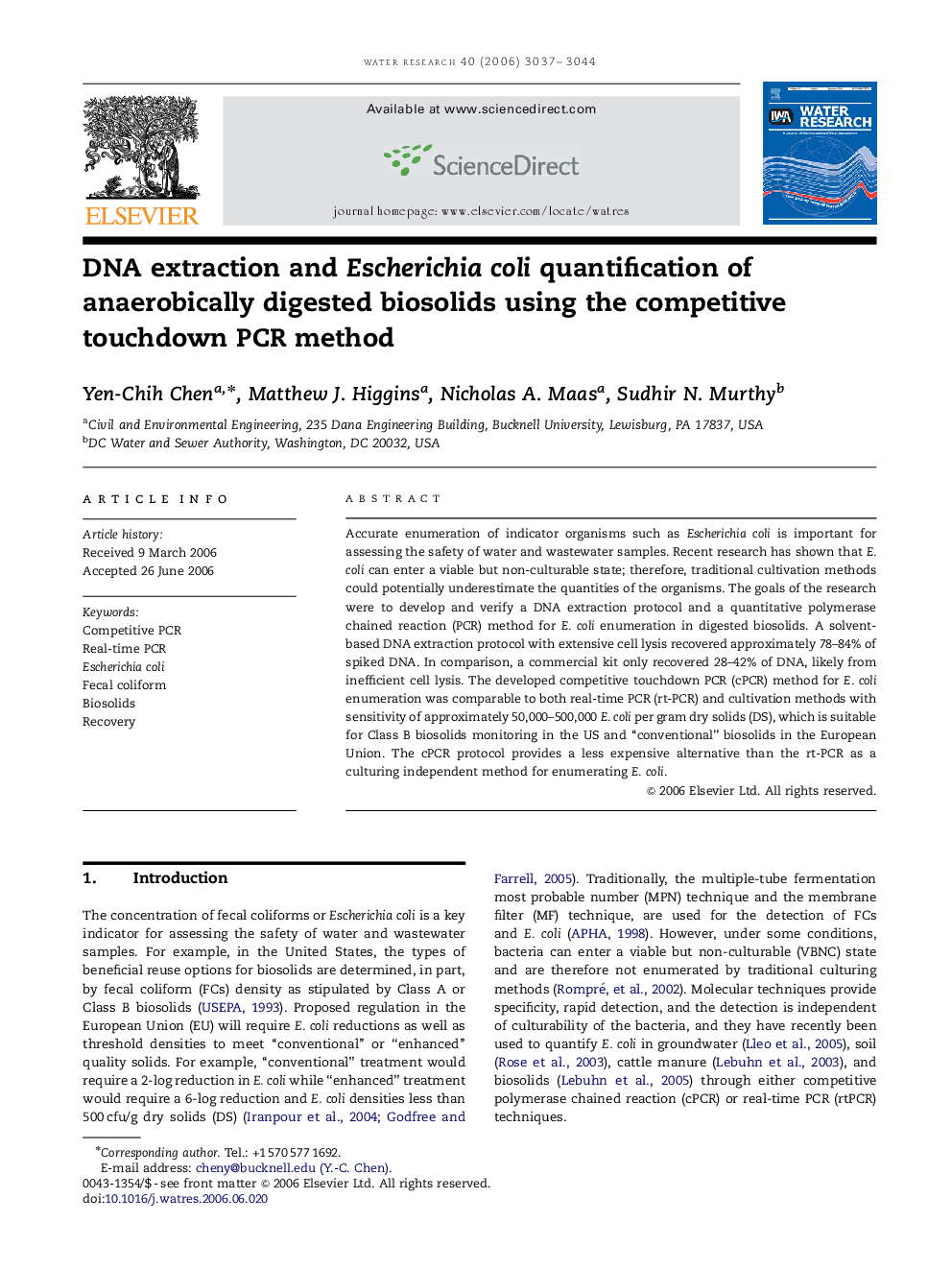| Article ID | Journal | Published Year | Pages | File Type |
|---|---|---|---|---|
| 4486982 | Water Research | 2006 | 8 Pages |
Accurate enumeration of indicator organisms such as Escherichia coli is important for assessing the safety of water and wastewater samples. Recent research has shown that E. coli can enter a viable but non-culturable state; therefore, traditional cultivation methods could potentially underestimate the quantities of the organisms. The goals of the research were to develop and verify a DNA extraction protocol and a quantitative polymerase chained reaction (PCR) method for E. coli enumeration in digested biosolids. A solvent-based DNA extraction protocol with extensive cell lysis recovered approximately 78–84% of spiked DNA. In comparison, a commercial kit only recovered 28–42% of DNA, likely from inefficient cell lysis. The developed competitive touchdown PCR (cPCR) method for E. coli enumeration was comparable to both real-time PCR (rt-PCR) and cultivation methods with sensitivity of approximately 50,000–500,000 E. coli per gram dry solids (DS), which is suitable for Class B biosolids monitoring in the US and “conventional” biosolids in the European Union. The cPCR protocol provides a less expensive alternative than the rt-PCR as a culturing independent method for enumerating E. coli.
